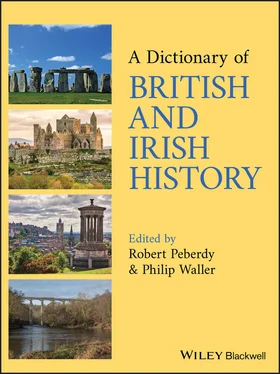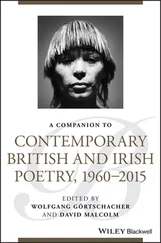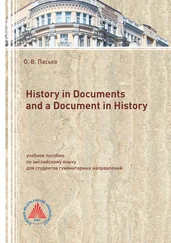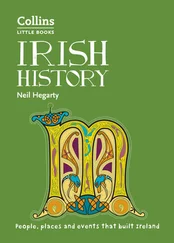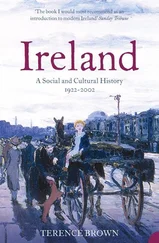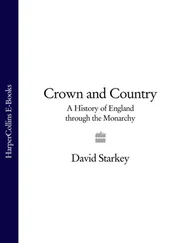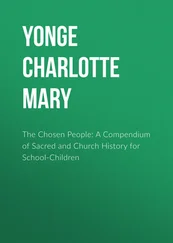After 1945, selective herbicides, improved fertilizers and machinery (tractors, harvesters) increased arable productivity. From 1973, agriculture was subject to the COMMON AGRICULTURAL POLICY of the European Economic Community. By 1990, the number of farms had halved, though 72% of holdings remained smaller than 123 acres (50 ha). In the late 1990s, price falls again threatened both upland sheep farming and all aspects of cattle production. In the early 21st century, farming remained primarily pastoral, though in dairying only large herds of cows (several hundred head) were viable. Many farmers engaged in diverse activities (e.g., provision of accommodation) to provide sufficient income. See also TENURES, WALES; ENCLOSURES, WALES; RURAL SETTLEMENT AND SOCIETY, WALES; AGRICULTURE, STATE INTERVENTION, GREAT BRITAIN.
AHERN, BERTIE
(b. 12 Sept. 1951 at Drumcondra, Co. Dublin, Republic of Ireland). A FIANNA FÁIL TD (1977–2011), Ahern served in the governments of Charles HAUGHEY and Albert REYNOLDS. Elected party leader after Reynolds (1994), he was unable to become taoiseach (premier) because Fianna Fáil’s coalition partner (Labour) changed alliance ( see BRUTON, JOHN).
After the 1997 general election, Ahern became taoiseach of a coalition government, continuing with coalitions after the 2002 and 2007 elections. With Tony BLAIR, he reinvigorated the Northern Ireland PEACE PROCESS, resulting in the BELFAST AGREEMENT (1998), modification of the Republic’s constitutional claim to Northern Ireland (1999), and devolved government in Northern Ireland (1999–2002). During Ahern’s premiership, the Republic entered the euro currency (1999) and accepted the European Union’s treaty of Nice (2002, by second referendum). In early 2002, the government accepted a payment from Catholic religious orders for indemnification against child abuse claims. A proposed tightening of the ABORTION prohibition was rejected by referendum (2002). Economic expansion continued.
Suspicions about personal finances raised by the Mahon Tribunal into political corruption caused Ahern to resign as taoiseach and party leader (effective May 2008). After the economic crash of Sept. 2008, he was widely blamed for Ireland’s plight. See also SOCIAL PARTNERSHIP; COWEN, BRIAN; CHURCH–STATE RELATIONS, SOUTHERN IRELAND FROM 1922.
AIDAN(fl. from 635; d. 31 Aug. 651 near Bamburgh, Bernicia). In 635 Aidan, an Irish monk at IONA (off W Scotland), offered to serve as bishop and missionary in BERNICIA and DEIRA (NE England), to meet a request from King OSWALD. After being consecrated, he settled on Lindisfarne, where a monastery was founded, and from where he made preaching tours on foot. After Oswald's death (642), he continued work under OSWIU and Oswine (subking in Deira). See also CONVERSION OF ANGLO‐SAXONS; CHAD. AIRCRAFT INDUSTRY, UNITED KINGDOM
Short Brothers was the first company in the world to manufacture aircraft, from 1909 in London. A sizable industry developed primarily because of military demand. During WORLD WAR I (1914–18), employment reached 112,000, and 58,000 planes were produced (from 1918 mainly for the ROYAL AIR FORCE). Contraction followed, with employment reduced to 30,000 by 1930. About 15 companies made airframes, and five made engines, mainly for the RAF, although aircraft were also produced for commercial AIR TRANSPORT and private flying. Re‐expansion of military production began in 1934.
During WORLD WAR II (1939–45), employment reached 340,000 and 131,000 planes were manufactured. An outstanding innovation was the jet engine (in service from 1944; see WHITTLE, FRANK).
Aircraft development was extensively funded by the government from the mid 1940s to sustain a substantial industry. New military planes included the Canberra bomber (in RAF service 1951–2006), Hunter fighter (1951–1990s) and Lightning supersonic fighter (1959–88). Civil planes included the first jet‐powered airliner, the Comet (from 1952). Its grounding (1954–8), after crashes, allowed the US industry to overtake. The VC‐10 (produced 1962–70) was the last British long‐haul airliner.
From the late 1950s the government encouraged company mergers and international collaborations. The latter produced the Anglo‐French supersonic airliner Concorde (in service 1976–2003). From 1967, wings were contributed to European ‘Airbus’ aircraft.
In 1971, following collapse, engine manufacturer ROLLS‐ROYCE was nationalized, and in 1977 most other manufacturing was consolidated in the State‐owned British Aircraft Corporation (both privatized in 1980s). New military aircraft were collaborations, notably the Tornado (manufactured 1979–98) and Typhoon (from 1994).
The creation of the defence company BAE Systems in 1999 subsumed most aircraft production. Production of civil aircraft (small airliners) ended in 2013. In 2017, aircraft and related aerospace manufacturing employed 120,000 people. Rolls‐Royce remained a world leader in jet engines. See also INDUSTRY, NORTHERN IRELAND.
AIR FORCE, SOUTHERN IRELANDsee DEFENCE FORCES, SOUTHERN IRELAND AIR FORCE, UNITED KINGDOMsee ROYAL AIR FORCE AIRGIALLA (ORIEL OR URIEL)
A kingdom in central N Ireland (broadly between Loughs Erne and Neagh). It existed by the 5th century when it may have changed allegiance from the Ulaid (retreating eastwards) to the advancing Northern UÍ NÉILL ( see ULSTER). Its name, meaning ‘Eastern hostages', was bestowed by the latter. Airgialla supposedly comprised nine dynasties, one holding a high‐kingship. During the 7th and 8th centuries lands were lost to the Cenél nEógain branch of the Northern Uí Néill (modern Co. Tyrone).
By the 11th century the Ua Cerbaill dynasty was dominant (English, O'Carroll). Donnchad Ua Cerbaill (d. 1168) added lands to the SE (modern Co. Louth) by 1142. After his son Murchad's death (1189), Prince JOHN of England granted lands to the Anglo‐Normans Bertram de Verdon and Gilbert Pipard (1189 or 1190). Settlement by their retainers caused Ua Cerbaill authority to collapse.
From the early 13th century, the Mac Mathgamna (MacMahon) dynasty dominated the reduced kingdom (modern Co. Monaghan). In 1590, Hugh Roe MacMahon was executed for treason by the English and his lordship was divided (1591). See also NIALL NOÍGIALLACH; ARMAGH.
AIR TRANSPORT, GREAT BRITAIN AND NORTHERN IRELAND
Aeroplanes flew in Britain from 1908, and were soon used for military purposes ( see ROYAL AIR FORCE). State regulation of civil aviation, and scheduled services (initially to Paris, France), began in 1919, the latter operated by British and overseas companies. The earliest international airports were near London at Hounslow Heath (1919–20) and Croydon (1920–39). From 1924, the main British airline was Imperial Airways (created by a merger), which pioneered routes across the BRITISH EMPIRE. In the 1930s several companies developed domestic routes (e.g., to MANCHESTER, BELFAST, GLASGOW); a merger created British Airways (1935), which served domestic and Continental European destinations. Imperial and BA merged in 1940, under State ownership, as the British Overseas Airways Corporation (BOAC). Pan American Airways operated scheduled trans‐Atlantic flights in 1939. Commercial flying was restricted during WORLD WAR II (1939–45).
From 1946, Heathrow London (created for military use) was the primary civil airport (busiest in Europe by 1955). Gatwick was expanded from 1958 as London’s second airport. The designation of Stansted in 1969 as the third reflected the growth of flying as a mass activity (e.g., for holidays). London City Airport, near central London, opened in 1987 for smaller aircraft; Luton Airport was renamed ‘London Luton’ in 1990. Regional airports were also expanded. By the early 21st century there were 15 major airports.
Читать дальше
